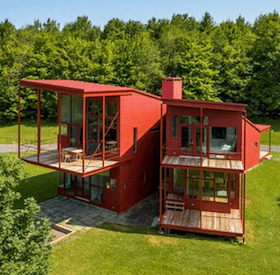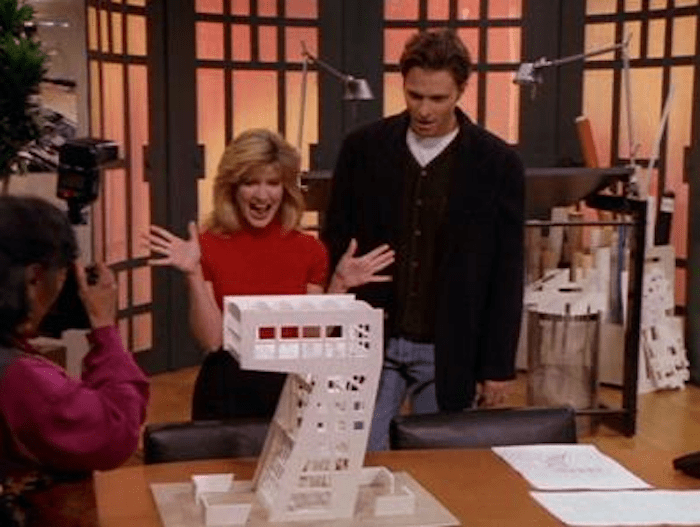Search Posts
Recent Posts
- Who’s cooking at the Conclave? – Chef Walter Potenza May 6, 2025
- More funds for energy assistance from RI Good Neighbor Energy Fund May 6, 2025
- Rhode Island Weather for May 6, 2025 – Jack Donnelly May 6, 2025
- Rhode Island Real Estate market, May 2025: What you need to know – Emilio DiSpirito May 6, 2025
- ART! Arts Day at the RI State House May 6, 2025
Categories
Subscribe!
Thanks for subscribing! Please check your email for further instructions.

O starchitect house blues! – by David Brussat
By David Brussat, Architecture Here and There
Photo, top: Conn. house by Rafael Viñoly costing $25 million on market now at $9.75 million. (Sotheby)
A Bloomberg article, “Having a Home by a Star Architect Is Amazing – Until You Try to Sell It,” by James Tarmy, raised the hair on the back of my neck.
Among my favorite activities when I slip into one of my rare moods of masochismo is to drive around the East Side of Providence, up and down streets chock-a-block with lovely historic homes. I stop before the thankfully rare modernist houses, trying to figure out why anyone would inflict such a monstrosity on the neighborhood they have decided to move into. Sadism is the only plausible answer. Or masochism, perhaps, if they themselves are the intended victims rather than their neighbors.
Of course, if they are out in the woods like the Rafael Viñoly-designed house in Ridgefield, Conn., who cares? Except the local animal population. In fact, I love animals, but I would encourage every modernist architect to find clients who want monstrosities in the vast American outback. That will divert these architects’ energies away from cities and towns where their work does real damage to both the beauty of the civic realm and the property value of its neighborhoods. After all, if a modernist house goes up in a forest, no one sees its ugliness (except animals). The homeowners themselves, being insensate, are of little or no account in this calculation.
Speaking of calculations, the Viñoly house, pictured on top of this post, cost $25 million to design and build, but has been sitting on the market with an asking price of $9.75 million.
Given my opinion of modernist houses, let alone those built in traditional neighborhoods, it was gratifying to have my expectations confirmed.
Y house by Steven Holl. (Alan Koppel)

Tarmy’s article refers to a house in the Catskills designed by Steven Holl and shaped like a Y. This reminded me of an episode of the television sitcom Wings about life at a small Nantucket airport. A famous architect who is a regular visitor to the island offers a free house design as a wedding gift to a pair of engaged airport employees. When they learn that the new house will be shaped like a 7, the two fight over who will tell the architect they don’t want it. The episode is “Frank Lloyd Wrong.” It’s fall-down funny.
Tarmy reports that the Y house, which cost $1.3 million to build back in the mid-’90s, has been placed on the market for a delusional $1.6 million, which, taking inflation into account, amounts to a markdown of about 20 percent below the original cost.
“If a local realtor [valued the Y house] by square foot, that house would be $400,000 at most, which is hilarious. It’s worth far more than that, but it has to be perceived value in the eye of the buyer.”
Kumar and the owners of the property are encountering the sobering reality of selling a “starchitect”-designed home: They might have gotten what they paid for in their house’s dramatic lines, luxurious materials, and prestigious pedigree, but when it comes time to sell, the market is often unforgiving.
I would argue that the owners got what they paid for only in theory. They misinterpreted their own desires. They thought they wanted a house they could brag on and show off. When that turned out, over time, to be weak tea, they realized what they really wanted after all was a house they could live in comfortably, and part of that meant a house that looked like a house – a house that might appreciate in value over time, and sell at a profit.
Too late.
If these agents truly believe that these modernist houses are “amazing” and should sell at a price that reflects what their owners paid to build them, they are delusional and ought to relocate to another industry. I just hope nobody leaps to the conclusion that these houses would sell better if they were nearer to civilization. I say build them all in the middle of nowhere.

David Brussat is the author of the blog, Architecture Here and There, which fights the style wars for classical architecture and against modern architecture, no holds barred. History Press asked me to write and in August 2017 published my first book, “Lost Providence.” I am now writing my second book. My freelance writing on architecture and other topics addresses issues of design and culture locally and globally. I am a member of the board of the New England chapter of the Institute of Classical Architecture & Art, which bestowed an Arthur Ross Award on me in 2002. I work from Providence, R.I., where I live with my wife Victoria, my son Billy and our cat Gato. Follow his blog at www.architecturehereandthere.com
